Why Did The Nations Come?
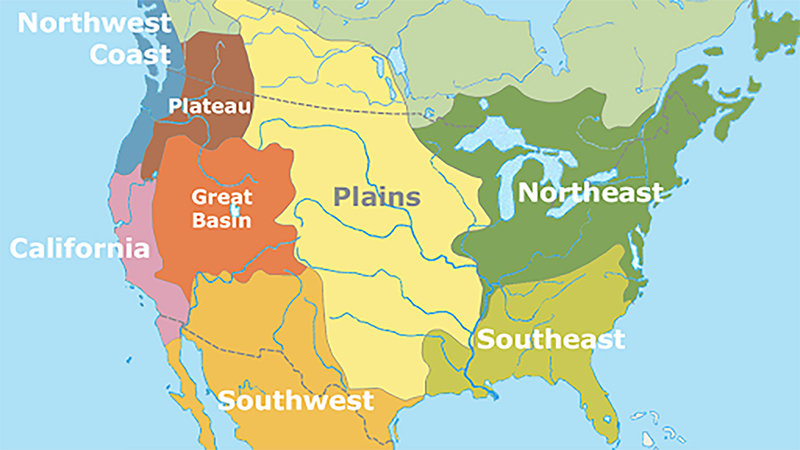
It’s a story as old as time. They came for the money. They came for gold, for furs, for the promise of untold riches. European nations intended to increase their wealth and broaden their influence over world affairs through colonization.
They came because their land route to Asia, to silks and spices, the Silk Road, was dangerous and often closed for wars. Travel by sea was also dangerous, but shipbuilding was improving.
Nations began to invest more in shipbuilding, and they reached out to explorers. Most explorers sailed south around Africa, then east. Columbus sailed west.
It took Europeans, disease, guns and horses less than 300 years to destroy a way of life that had been going on for at least 18,000 years.
Do You Remember The Song?

“In fourteen hundred ninety two, Columbus sailed the ocean blue…. “
So there’s that. An Italian explorer set sail under a Spanish flag, and he was lost. He was looking for Asia.
Columbus did not see the mainland of the Americas, but the first explorations of the continents were launched from the Spanish possessions that he established.
Why Did The People Come?
The people came to escape religious persecution. The history of religious persecution in Europe would take hours. We won’t do that here. Britain benefited from those who left for religious reasons, in fact, it was encouraged. Britain rid itself of pesky religious groups and gained permanent settlements, benefiting from new trade opportunities.
The people came for opportunity. The main source of labor and a large portion of immigrants from the mid-1500s to the late 1600s were indentured servants looking for a new life. Little did they know that – to a large extent – they would continue indentured servitude in the Americas. During the 17th century, indentured servants constituted three-quarters of all European immigrants to Virginia.
Forced Immigration
Slavery existed in the Americas prior to the presence of Europeans. Natives often captured and held other tribes’ members as captives.
The Spanish enslaved local aborigines in the Caribbean.
As the native populations declined (mostly from European diseases, but also and significantly from forced exploitation and careless murder), they were often replaced by Africans imported through a large commercial slave trade.
By the eighteenth century, the overwhelming number of black slaves was such that Native American slavery was less common.
Brief History of Conquests
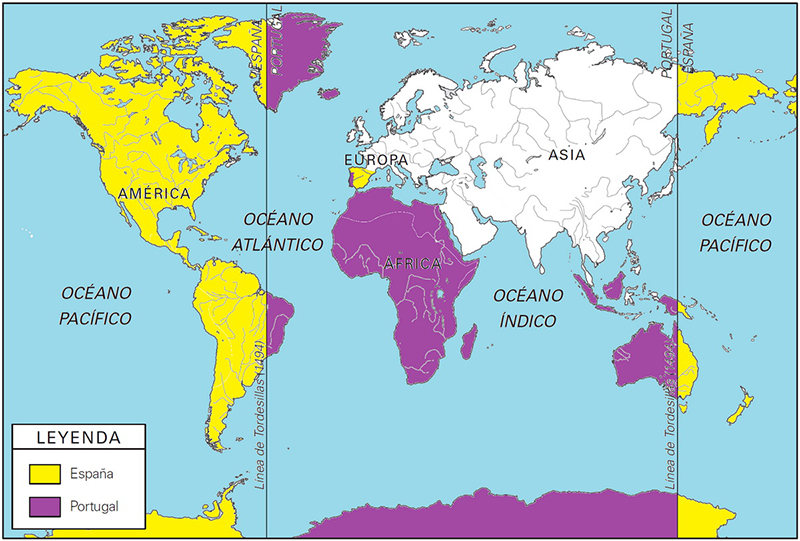
The first conquests were made by the Spanish and the Portuguese. In the 1494 Treaty of Tordesillas, ratified by the Pope, these two kingdoms divided the entire non-European world between themselves, with a line drawn through South America.
Based on this treaty and the claims by Spanish explorer Balboa to all lands touching the Pacific Ocean, the Spanish rapidly conquered territory. They overthrew the Aztec and Inca Empires to gain control of much of western South America, Central America and Mexico. This was in addition to their earlier Caribbean conquests. Over this same time frame, Portugal conquered much of eastern South America, naming it Brazil.
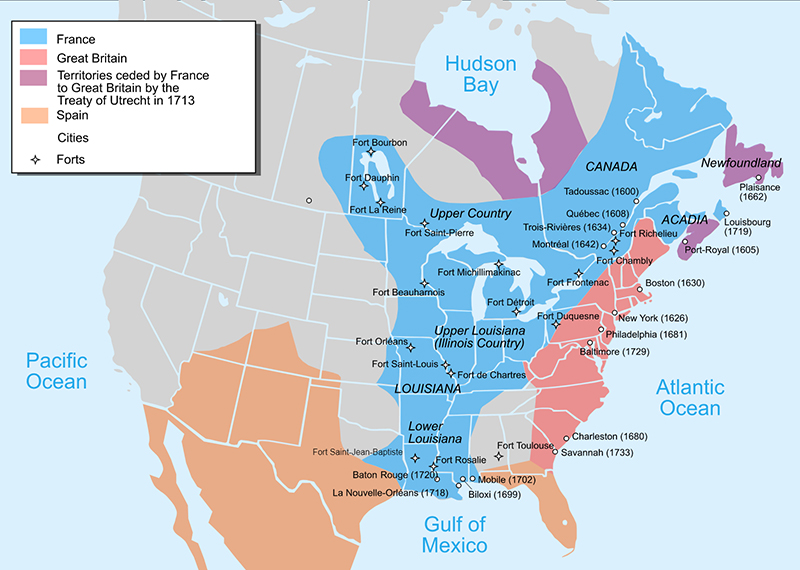
Other European nations soon disputed the terms of the Treaty, which they had not negotiated.
England and France attempted to plant colonies in the Americas in the sixteenth century, but these met with failure. However, in the following century, the two kingdoms, along with the Netherlands, succeeded in establishing permanent colonies.
Some of these were on Caribbean islands, which had often already been conquered by the Spanish or depopulated by disease, while others were in eastern North America, which had not been colonized by Spain north of Florida.
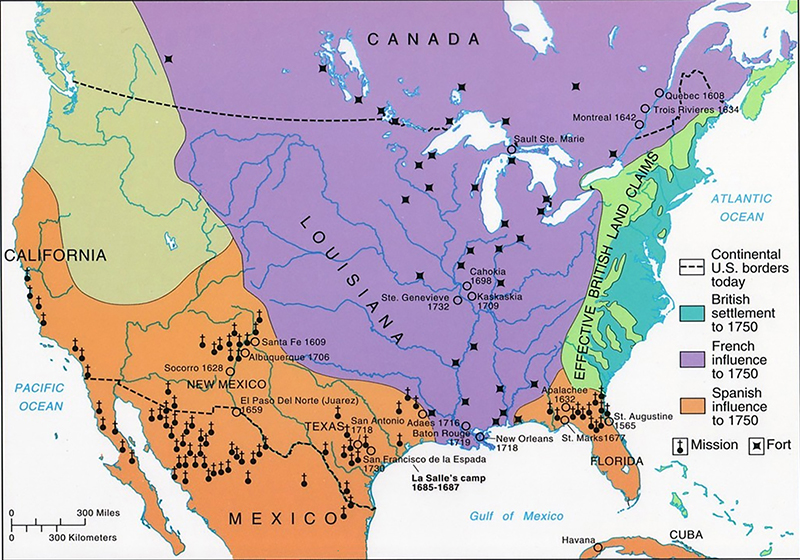
Early European possessions in North America included Spanish Florida, the English colonies of Virginia and New England, the French colonies of Acadia and Canada, the Swedish colony of New Sweden, and the Dutch colony of New Netherland.
In the eighteenth century, Denmark-Norway revived its former colonies in Greenland, while the Russian Empire took a stake in Alaska.
As more nations gained an interest in the colonization of the Americas, competition for territory became increasingly fierce. Colonists often faced the threat of attacks from neighboring colonies, as well as from indigenous tribes and pirates.
Eventually, the entire Western Hemisphere would come under the domination of European nations. This led to profound changes to its landscape, population, plant and animal life.
Columbian Exchange
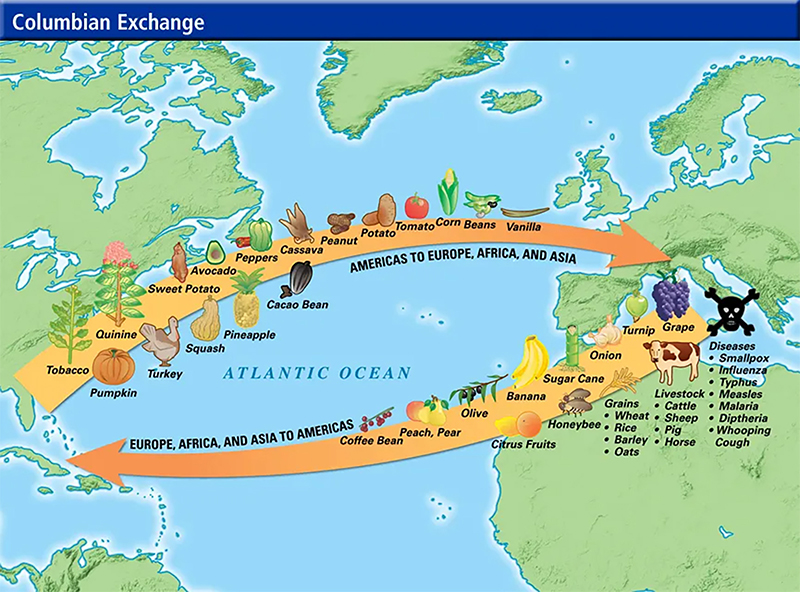
The post-1492 era is known as the period of the Columbian Exchange.
Potatoes, pineapples, turkeys, dahlias, sunflowers, magnolias, maize, chilies and chocolate went east across the Atlantic Ocean.
Horses, guns, smallpox and measles traveled west.
The flow of benefits appears to have been one-sided, but the colonization and exploration of the Americas transformed the world.
Disease And Population Loss
The European and Asian lifestyle included a long history of sharing close quarters with domesticated animals (cows, pigs, sheep, goats, horses, fowl), which resulted in epidemic diseases unknown in the Americas.
Epidemics of smallpox (1518, 1521, 1525, 1558, 1589), typhus (1546), influenza (1558), diphtheria (1614), and measles (1618) swept ahead of later European contacts, killing between 10 and 20 million indigenous peoples, up to 95% of the population. The number has been challenged, but the percentage was high.
Arrogance
The cultural and religious arrogance that led European governments and settlers to deny anything of value in pre-Columbian America was destructive, even genocidal. Cultural arrogance allowed European settlers not only to exploit the Americas but also to deny that the Americas had real history before 1492.
Europeans also denied Native American spirituality, which, even today, reveres nature and sees humanity as part of nature. In the original Americas, land was not “owned” by people. Rather, the people were owned by the land, which was to be respected and looked after.
Focusing on North America
Mainly due to discrimination, there was often a separation between English colonial communities and indigenous communities. The Europeans viewed the natives as savages who were not worthy of participating in what they considered civilized society.
Due in part to their exclusion from British society, the native people of North America did not die out nearly as rapidly nor as greatly as those in Central and South America. However, they continued to be stripped of their native lands.
They were pushed further west, into the Woodland areas. This caused friction with the tribes that were already there.
Common Ground
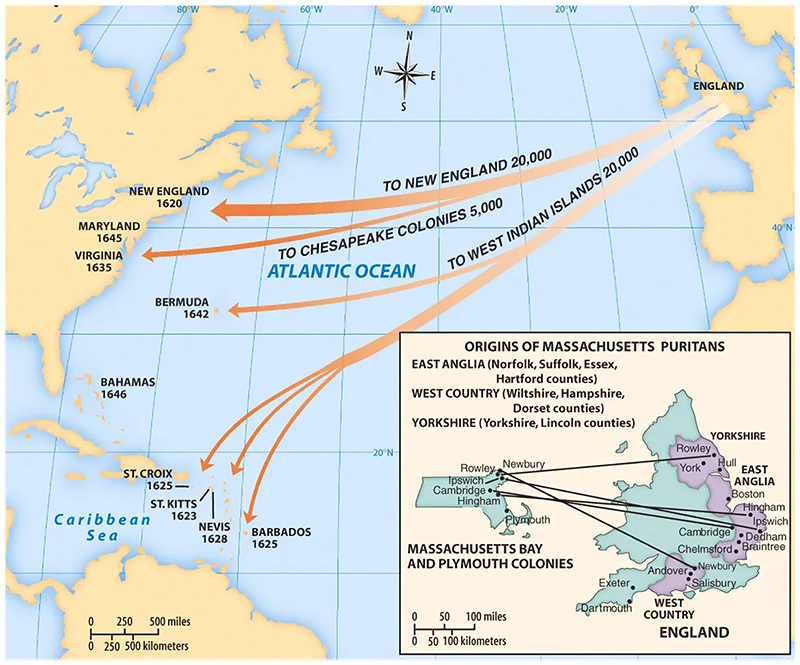
In the 1600s, when the first English settlers began to arrive in New England, there were about 60,000 Native Americans living in what would later become the New England colonies.
In the first English colonies in the Northeast (as well as in Virginia), there were initial conflicts and concerns. Still, colonists were able to build thriving colonies with the help of natives.
Trade was one of the first bridges between New England colonists and local Native American populations. For the colonists, it was about building the infrastructure and relationships they would need to stay and thrive in the New World. For the Native Americans, it was often about building potential alliances.
Trade
Physical goods were traded between the colonists and the natives, but there were other commodities.
Ideas were traded alongside physical goods. The dialogues between the colonists and Native Americans were practical, political and spiritual. The primary religion of the New England colonies was a strict Puritan Christianity. As the colonies grew and changed, some of the colonists began to move away from that base. So too did views on the Native Americans who shared their land.
A famous example of this is Roger Williams, whose rebellion against the religious powers-that-be led him to create the colony of Rhode Island. Williams held the unorthodox view that the colonists had no right to occupy land without purchasing it from the Native American peoples living there.
Over time, relations between the now-established colonies and the native peoples deteriorated. Some colonial leaders, such as the Puritan minister Increase Mather, believed that the illness and decimation of the New England Native Americans was an act of God to support the colonists’ right to the land.
Effects of Colonization
European colonization of North America had a devastating effect on the native population. Within a short period of time their way of life was changed forever.
Some problems were unintentionally introduced by the colonists, like smallpox and other diseases. Although the colonists suffered diseases of their own early on, they were largely immune to the microbes they brought over to the New World. The local populations, however, had no such immunity to diseases like smallpox, tuberculosis, measles, cholera, and the bubonic plague.
Horses and guns changed their way of hunting for food. Since native cultural groups had been based on their method of subsistence, changing this changed the groupings. Some major groups moved. Once they started to move, fights over territory broke out. Groups who at one time had plenty of food, now didn’t have enough.
Missions were introduced, and Natives were aggressively encouraged to convert to Christianity. Most of the native groups had some form of ancestral worship. The enforced change in religion altered their culture identity.
Added to this was the European nations’ and the colonists’ need for land and food. Native groups, because they were nomadic, didn’t see land as belonging to one person. The idea that someone could come in, claim a piece of land and ban them from it caused many problems. Wars broke out because they could no longer hunt or forage for food in places they had always done so.
Eventually, a determined effort was made to completely suppress the Native culture. This active suppression took many forms. Certain tribes were freely supplied with guns, so that they could wipe out their neighbors. Old problems between tribes were brought back into the open, causing wars. The army and many settlers treated the Natives as nothing more than pests to be exterminated. Laws were introduced that banned certain ceremonies, forced children into the European education system, and tied whole groups to land that was useless and could not sustain them. The intention was to deny them of their cultural identity, which had the same effect as wiping them out.
Not much is known of the effects of colonization on the Eastern Woodland cultures. They were destroyed so quickly that no one bothered to write down how it happened. Any group that survived was forced, by the US Government, to move to the Indian Territories in the 19th century.
The Series
- Indigenous Peoples of Pulaski County
- The Land, From Ice To European Arrival
- The People, From Ice To European Arrival
- Europeans Arrive
- French Fur Trade & The Beaver Wars
- Indian Wars, Pre-Revolutionary War (The Colonial Wars)
- Revolutionary War
- Indian Wars, Post-Revolutionary War
- United States Takes Shape
- Indiana Takes Shape
- Pulaski County Takes Shape
- Indian Removals, 1700 – 1840
- The Potawatomi, Keepers Of The Fire
- Trail Of Death
- The Chiefs Winamac
- 7 Fires of the Anishinaaabe
